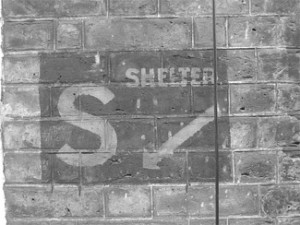 It’s no coincidence that we use the term “go to ground” when we speak of taking refuge in an emergency. The earth has always provided us with shelter and always will, if we know how to take advantage of it. In the modern world, an underground structure is a great way to utilize the earth’s protection and provide a safe place for you and your family to weather the storm, be it natural or manmade. If you’re contemplating an underground shelter, here are a few things to consider.
It’s no coincidence that we use the term “go to ground” when we speak of taking refuge in an emergency. The earth has always provided us with shelter and always will, if we know how to take advantage of it. In the modern world, an underground structure is a great way to utilize the earth’s protection and provide a safe place for you and your family to weather the storm, be it natural or manmade. If you’re contemplating an underground shelter, here are a few things to consider.
Size
Your structure should be big enough to comfortably house you and your family for an extended period. Several days in the shelter may be necessary, and you will need the space to store the necessary supplies as well as areas for sleeping, eating and stretching. While living space is nice, and even a necessity, the bigger you build the more complicated the construction becomes. It’s also harder to hide large underground structures, which leads to the next consideration.
Clandestine Construction
The best underground room is the one that only you are aware of. If they can’t find it, they can’t hurt it or you. To accomplish this, you’ll have to do the work yourself. Many jurisdictions also have strict rules when it comes to construction, requiring permits. If you choose to keep the construction of your room a secret, then keep in mind you may be violating local zoning ordinances.
In an urban environment, keeping a construction project of any size will be a challenge. One way to accomplish the work, under the noses of your neighbors and the government, is to disguise the construction by doing it along with another project, such as remodeling a room or adding on to your house.
Building Materials
Since this structure’s main purpose is protection for you and your family in an emergency, you should use the best materials you can afford. When it comes to strength, there is no substitute for rebar reinforced concrete. A well-made concrete room can be built to withstand anything short of a direct bomb hit (or even that, if you’re willing to put in the effort). Keep in mind that anything other than a small hide site will require a lot of concrete. This will add to the difficulty of camouflaging the construction as well as the cost. Consider using concrete blocks reinforced with rebar and backfilled with concrete instead of poured concrete. You will sacrifice a little strength, but gain in terms of simplicity and the ability to keep a low profile.
Ventilation
Even unsealed underground rooms require supplementary ventilation, especially if they will house several people. Fans can provide the needed ventilation, but require electricity. Make sure you can power the fans with batteries or even manually if necessary.
Flooding
If you live in an area with a high water table or an area that receives a lot rain, you must consider flooding. The best solution is to install a sump pump during construction. Most sump pumps are electrically powered, and since electricity might become a luxury in a survival situation, you’ll need to plan a backup. A pump that will run off battery power is an option, and can be integrated with installed solar or wind power. A good hand pump should be included in your supplies.
Entrance
The entrance/exit to the shelter is an important consideration. Make sure that the entrance allows all family members to enter the shelter quickly and easily. If you have an elderly family member or someone incapacitated, the entrance must be designed with them in mind.
As important as entering the shelter is, getting out is even more important. Consider anything that might block the exit after a storm or attack. Any overlying structure or large trees can collapse on the exit and trap you inside. Some people prefer to have a backup exit. If your shelter doesn’t allow for this, make sure that you will be able to dig your way out if required.
With these basic considerations in mind, you can begin to plan a room specific to your needs. Once your shelter is in place, if you ever need to “go to ground,” you’ll be ready.
 Off The Grid News Better Ideas For Off The Grid Living
Off The Grid News Better Ideas For Off The Grid Living
